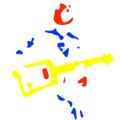
Been working through the 3 string slide course, learning a lot and having fun. I currently own a 3 string license plate CBG. However I had a 4 string standard CBG made and should be arriving soon. I am looking forward to starting the 4 string fretted course. The 4 string will be more for chord and fretted playing, where the 3 string is more for blues and slide playing. I was curious on the most common tuning of the 4 string, G D g b. So in open tuning you have the root, fifth, octave, third (of the octave). Why is the third placed as the third of the octave? Logically I would have thought root, third, fifth, octave in that order would be more desirable. I am versed in basic music theory and can play several instruments, however I am new to the guitar so I suspect that there is rationale for this (perhaps for chord layout?). Would you happen to know?
Thanks
Brian
There are 2 Comments
Great question
Hi there Brian
GDGB has a number of advantages and over time has become a bit of a standard although there is lot more variety in 4 string tunings than 3 string. With the GDG on the bottom you can move from 3 strings to 4 a lot easier, it also allows you to play a lot of the blues and rock'n'roll rhythm figures using the bass strings. Having the 3 on top is not great for slide blues but not insurmountable. I prefer this tuning for more contemporary rock tunes, hence the content in the 4 string course although you can certainly play the blues with it, hence the content in the slide workshops for 4 string.
GDGB is also what we call an open voicing, meaning that it spans more than one octave. This is common in most guitar chord voicings and two-handed piano chord voicings as well. This may be a reason that the 3 on top is preferred amongst chord players. You'll also find that having the 1 and 5 in the lower registers tends to ground the chord a little better, the 3, 7 and any extensions or alterations tend to work better on top.
Most of the 4 string tunings that I've seen are fragments of either open G open D 6 string tunings, this one is the middle 4 in an open G tuning so many 6 string players can easily get their heads around it as well.
I'm glad you're enjoying the course, thanks again for the question, keep them coming.
Patrick
- Log in to post comments

